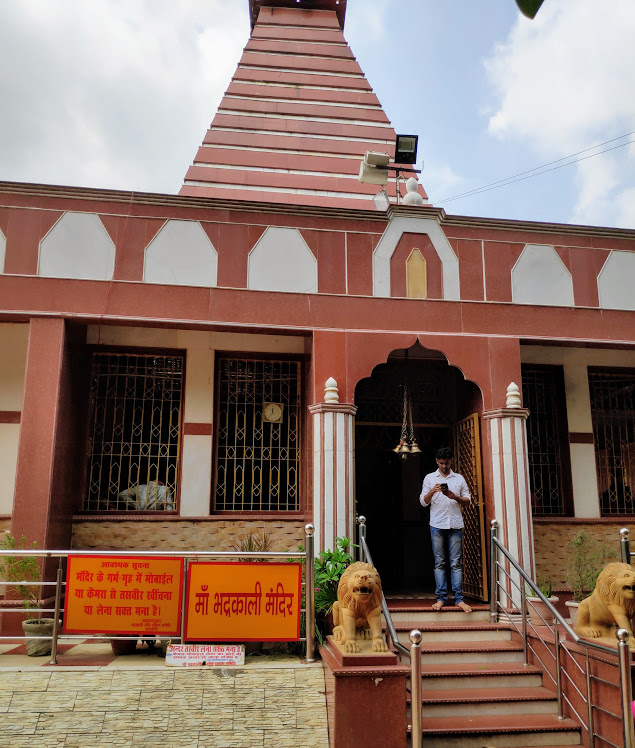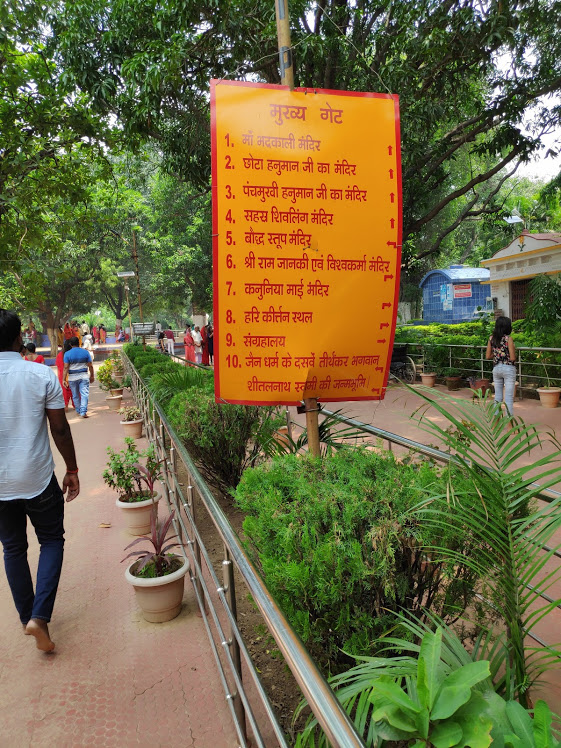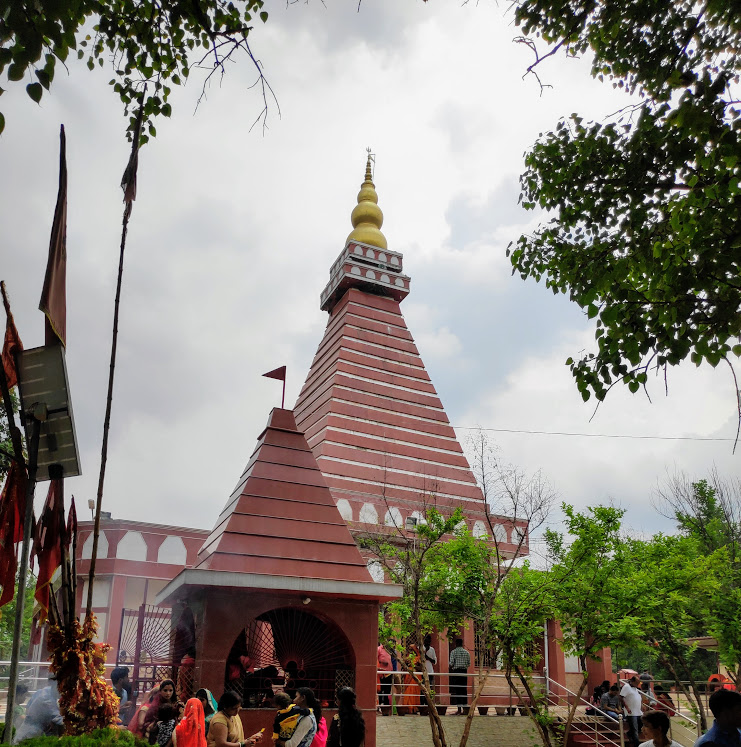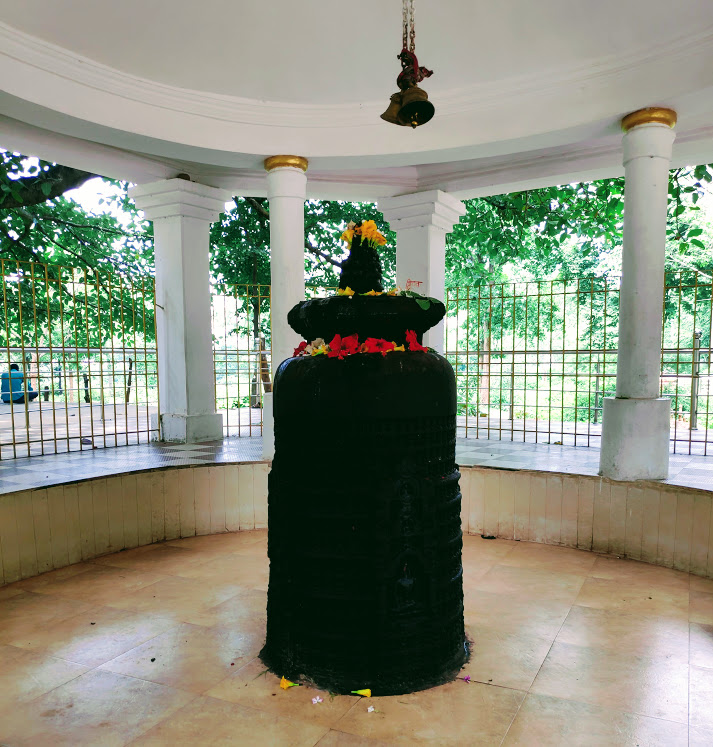My son, Judhajit and I have been planning to visit the ancient Bhadrakali temple at Itkhori for a long. The area was before infested by Maoists and wasn’t a safe place. Now the government with the help of local people got rid of them. The Jharkhand government is developing the place as a centre of religious tourism.
Nestled in the serene landscapes of Jharkhand, India, lies a hidden gem that beckons seekers of spiritual solace and history enthusiasts alike. The Itkhori Temples, also known as the Bhadrakali Temple Complex, stand as a testament to the rich cultural heritage and religious significance of the region. Itkhori in Chatra district of Jharkhand state of India is situated at around 150 km from Ranchi, the capital of Jharkhand, at the confluence of two rivers named ‘Mahane’ (or, Mahanad) and ‘Baksa’.
It is a wonderful place with an abundance of historic reminiscences and archaeological remnants demonstrating a breathtaking saga of religious tolerance and cultural unity. Besides Bhadrakali, seen as a propitious form of Kali, Shiva and Hanuman idols complete the Hindu influence. Besides these, there is a stupa with 1,008 figurines of Buddha and the charan paduka (slippers) of Jain Tirthankar Sheetalnath. All are made of black stone, with similar aesthetic styles, suggesting religious co-existence close to the Middle Ages.
The history of Itkhori dates back to ancient times, tracing its roots to the Mauryan and Gupta periods. According to legend, Lord Buddha himself is believed to have visited Itkhori during his lifetime. Over the centuries, the site flourished as a centre of pilgrimage and spiritual activity, attracting devotees from far and wide. It is believed to be the site where Lord Buddha, along with his disciples, meditated for several days during his journey to Bodh Gaya. Consequently, the temple complex also features a Buddhist stupa, highlighting its association with Buddhism.
Based on the inscriptions in Brahmi script near the feet of Maa Bhadrakali idol, it is said that it had been made during the ninth century CE by the orders of King Mahendra Pal, who was the king of Bengal and Bihar. The workmanship of the images and statues indicates a highly developed heritage of skills in the finer arts.
The historic town of Itkhori is a popular Buddhist centre known for its ancient temples and archaeological sites. Various Buddhist relics dated between 200 BCE and 1200 CE have been found here. The most popular attraction in Itkhori is the spectacular Maa Bhadrakali temple complex that dates back to the 9th century.
Maa Bhadrakali Temple

We visited Itkhori recently. When we started from Ranchi, it was raining. We were a bit depressed as the rains might spoil our visit. As we took the diversion towards Itkhori from NH33 after Hazaribagh the rain stopped, so we could enjoy the spirituality of the place.

The modern-day Bhadrakali Temple is built on the ruins of that was built by Raja Mahendra Pal centuries ago.

The Jharkhand Tourism took the responsibility of reconstructing the dilapidated temple with enriched history so that it can be preserved.

After Rajarappa, this is the second most important Shakti Peeths in the Jharkhand-Bihar area. The third temple is the temple of Ugratara at Hunterganj in the Chatra district. It was the capital of the Kingdom of Surath mentioned in the Markandeya Purana.

Legend of Maa Bhadrakali
Bhadrakali is one of the most powerful forms of Goddess Parvati or Devi. Goddess Parvati is the consort of Lord Shiva and Bhadrakali is one of the nine forms of Devi. The word ‘Bhadra’ is a Sanskrit word that means the one who blesses with good fortune and protects from evil.
There was a very powerful asura (demon) named Shankhachud who was blessed by Vishnu so that no person could kill him. When the gods lost their patience over his terror, the commander of gods Kartikeya went to fight him. But Kartikeya fell to the ground by Sankhchud’s attack. Seeing this the Goddess Adishakti took a fierce form of Bhadrakali and fought him but could not defeat him. So she began to swallow the asuras on the battlefield and in the last Shiva destroyed Sankhchud with his Trident.

Maa Bhadrakali is in the gentle form of Maa Mangala Gauri in the temple. The Idol of Maa Bhadrakali is made of Gomed (Hessonite) stone and Ashtadhatu (an alloy of eight metals). Time has not been able to affect it. Initially, there was an eight-handed idol of Goddess Durga beside the Bhadrakali idol but in 1968 both were stolen. Maa Bhadrakali’s idol was recovered but not the other one.
Legends and Folklores
Itkhori’s name also has a legend connected to Buddhism. Buddha visited this historical place and stayed there for some time. After He left, His relatives came to take their prince Siddhartha, the prince of Kapilavastu to His palace but when they could not distract him from meditating they gave up. During this time, of Goutam Buddha’s relatives uttered “It khoyi”…. meaning “lost Him here”… He is lost in meditation. That eventually got distorted to become Itkhori, the name of the place.

According to folklore, Lord Rama, Laxmana, and Sita had come and stayed for some time here during their exile. It is also said that King Yudhisthir had also stayed here during his agyatvas exile (without being discovered). So this place is related to both the Ramayana and Mahabharata eras.
King Surath, whose name is mentioned in Markandeya Purana, had his capital at the hills of Kuleshwari near Hunterganj in the Chatra district. He was defeated by a foreign invader and being defeated he came here at the Ashram of Medha Rishi. At the same time, a rich businessman named Samadhi vaishya, dispossessed of all his wealth by his own family came to this ashram. Both needed to know the cause of their distress. Medha Rishi told them the reason giving many examples and also told that if they wanted to get rid of their distress, they must pray to the Goddess Bhadrakali. Both of them went to a thick forest near the Mahane River and devoted themselves to prayers and penance. Maa Bhadrakali was pleased and came there to bless them. King Surath got back his desired kingdom but Samadhi vaishya did not wish for his wealth but for ‘moksha’, that he got from the blessings of the Goddess.


The Sahasra Lingam Shiva Temple
There is a Shiva temple adjacent to the Bhadrakali temple. The Shiva linga has no less than 1008 lingams carved into its surface. The Nandi outside the temple is built from a single rock. 1008 is an auspicious number in Indian culture. The lingam is believed to be swayambhu, meaning self-manifested.

Near the Shiva temple, there is a Hanuman temple. The idol of Hanuman has five heads of different creatures. Such an idol is called Panchamukhi Hanuman.
Buddha Stupa
Gautama Buddha once stayed here for some time. His maternal aunt failed to disturb him in his meditation. She left the place with the comment “Iti khoi” which in Pali means “I lost him here”. Later, the place came to be known as Itkhori.

Images of 104 Bodhisattvas and 4 principal Buddhas are sculpted on each side of a ‘stupa ‘-like structure. This is a 15-ft structure, of which only the top part of 5 ft can be seen above the ground. The top of the Stupa is in a mace shape over which is a small cover which when lifted lets ooze out droplets of water. The government of Jharkhand has planned to build the highest Stupa near this site.

10th Jain Tirthankara Sheetal Nath
In 2012, the Archeological Survey of India excavated an ancient Jain idol from beneath the temple compound. It proves that long before, Jainism was practised here. A pair of footprints which lie here are said to be of the 10th Tirthankara Sheetal Nath. This place is believed to be the birthplace of Tirthankara Sheetal Nath. We couldn’t see that stone piece as that could be seen only in the afternoon. A huge Jain temple is being constructed nearby, which is supposed to be the second largest temple dedicated to Sheetal Nath.
Archaeology
Archaeologists have stumbled upon several antiquities, including Buddha stupas, belonging to the 9th century CE here. Antiquities belonging to the Jainism and Hinduism were also found during the excavation. There are various Buddhist relics at Itkhori dating from 200 BCE to 1200 CE. 417 idols and statues of Lord Buddha were dug out from the temple campus which are kept at a museum in the campus of the District Board.
Numerous Buddhist and Hindu sculptures have been unearthed at a village called Bihari, near Itkhori. It is also near Kauleshwari Temple. Many other sculptures have been found while digging wells etc. in the region. There are some valuable sculptures in the Bhadrakali Mandir Museum.
Itkhori is a prominent religious site that holds significance for both Hindus and Buddhists. It serves as a place of worship, pilgrimage, and historical exploration, drawing devotees and tourists alike.
Efforts to preserve and promote the cultural heritage of the Itkhori Temples have gained momentum in recent years. Various initiatives aimed at conservation, restoration, and documentation have been undertaken to safeguard these architectural treasures for future generations. Additionally, the government and local authorities have been actively involved in promoting tourism in the region, highlighting the historical and cultural significance of Itkhori.
Visiting the Itkhori Temple is a truly spiritual experience that is sure to leave you with a sense of peace and tranquillity. The serene surroundings and the tranquil atmosphere make it an ideal place for meditation and introspection.
The Itkhori Temples stand as silent witnesses to the passage of time, preserving within their walls the echoes of ancient prayers and the whispers of bygone eras. As we conclude our journey through Jharkhand’s spiritual heart, we are reminded of the timeless allure of these sacred sites and the profound connection they forge between the past, present, and future. Whether visited for religious devotion or historical exploration, the Itkhori Temples continue to inspire awe and reverence, inviting all who venture there to discover the secrets of a bygone era.
Jai Maa Bhadrakali!

We had our lunch on a highway dhaba at the fringe of the Hazaribagh Wildlife Santuary and then went to visit the Chhinnamasta temple at Rajrappa.
ॐ जयंती मंगला काली भद्रकाली कपालिनी
दुर्गा क्षमा शिवा धात्री स्वाहा स्वधा नमोस्तुते।


Wow!! I am not a religious person but your each word…. each sentence was actually taking me through a guided tour. Through your eyes I could see all the characters through the centuries. Well done bro. 👍👏👏
LikeLike
Thanks, Aro. It’s not just being religious, it’s the place, the history, the environment, the whole package makes the trip all the more interesting.
LikeLike
Agree about the heritage but I am kinda allergic to all religious places irrespective of the faith. 😁
LikeLiked by 1 person
The place looks really amazing.
LikeLiked by 1 person
Wonderful place. I didn’t know of this place before. Thanks for sharing.
LikeLiked by 1 person
Indro, looks like a beautiful place. There are so many places steeped in deep history in our own India that a lifetime is not enough to explore.
LikeLiked by 1 person
Very true and many of them are not popularised.
LikeLike
Yes it’s a pity. And, hat’s the reason, we Indians are always craving to go to “phoren” places outside India, without even being aware of these opportunities next to us :-). In my visits to 70+ countries in last 30 years, many places I have come across are like this but the publicity and awareness around them are so hyped up (often supported by govts and local entities) that they automatically show up in the tourist domain… Our “Incredible India” campaign should focus on these not-so-known places rather than the same old stuff…
LikeLiked by 1 person
Absolutely, Ashok. Many of our heritage sites are getting destroyed and vanadalised by carelessness of the government and society.
LikeLike
Very informative religious post with beautiful clicks!! 👌 👌
LikeLiked by 1 person
Thanks, Tanushri.
LikeLike
Pingback: Ranchi | Mesmerising Dassam Falls – Indrosphere
Pingback: Ranchi | Mesmerising Dassam Falls – Indrosphere
बहुत सुंदर दर्शन।
LikeLiked by 1 person
धन्यवाद !
LikeLike
Pingback: Ugratara Temple: Jharkhand’s Sacred Gem of Navratri Tradition – Indrosphere